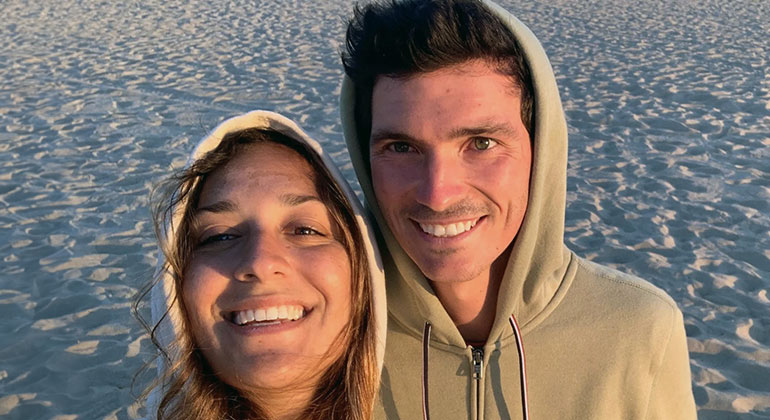
Emergency Spine Surgery at Mount Sinai West Saves a Young Professional Golfer From Paralysis
In August 2022, professional golfer Luis Vega, 27, was on vacation in New York City when he woke up one night with back pain. He dismissed the pain as being due to sleeping awkwardly, and awakened the next day without further symptoms. Luis and his girlfriend carried on with their vacation plans that day, including a cycling trip around the city. However, that night, the pain returned, this time with more severity and with a headache. He took a shower to relieve the pain, but woke up a few hours later unable to move his legs.
“I tried to get up to have another shower, and when I tried to get up from the bed, I just literally fell off the bed,” Luis told Today.com. “My legs were not able to handle the weight of my body, and that was pretty scary.”
Fortunately for Luis, his hotel was within blocks of Mount Sinai West. His girlfriend and her family immediately took him to the hospital’s Emergency Department for testing. His care was then taken on by Wesley Bronson, MD, Assistant Professor of Orthopedics, Icahn School of Medicine at Mount Sinai. An MRI revealed two possible causes of his paralysis: either a tumor or a hematoma (blood clot) was putting pressure on his spinal cord.
Dr. Bronson immediately admitted Luis for emergency spine surgery. "During surgery, it was obvious that he had a big hematoma—a blood clot," Dr. Bronson said. “It was putting severe pressure on the spinal cord."
Luis had developed a very rare condition—a spontaneous spinal epidural hematoma (SSEH). With this condition, blood collects in the spine and puts significant pressure on the spinal cord, enough to cause paralysis. Without treatment, the condition can lead to permanent damage to the spinal cord.
"The longer that spinal cord is pinched and the longer a patient remains paralyzed, the less of a chance that they ever regain the ability to walk," Dr. Bronson said.
Dr. Bronson removed the blood clot and performed an emergency decompressive laminectomy. During this procedure, a part of the lamina (vertebral bone) is removed to help reduce pressure on the spinal cord. "The sac that the spinal cord lives in immediately started to re-expand and take up the appropriate amount of space," Dr. Bronson said.
A spontaneous spinal epidural hematoma usually develops due to an underlying condition such as an abnormality in a patient’s blood vessels, or due to certain blood-thinning medications that increase the risk of bleeding. However, in Luis’ case, the orthopedic surgery team could find no underlying cause. "He had a remarkably rare diagnosis and had no risk factors at all for it to happen," Dr. Bronson said. "So, his case is the rarest of the rare."
Luis said, “The next day, I was able to move my legs and all my toes and stand up. In one day, I went from not being able to walk to walking again."
In the past year, he says his back has made a very good recovery and is “100 percent”. Since returning from New York, Luis, who is Spanish and based in Italy, has worked closely with his medical team in Spain and with his girlfriend, who is a physical therapist, and plans to return to professional golf, though he doesn’t want to rush his recovery.
“I think Dr. Bronson is one of the most skillful surgeons I’ve ever met,” Luis says. “He took on a very difficult case with a young professional golf player and he did a fantastic job.”